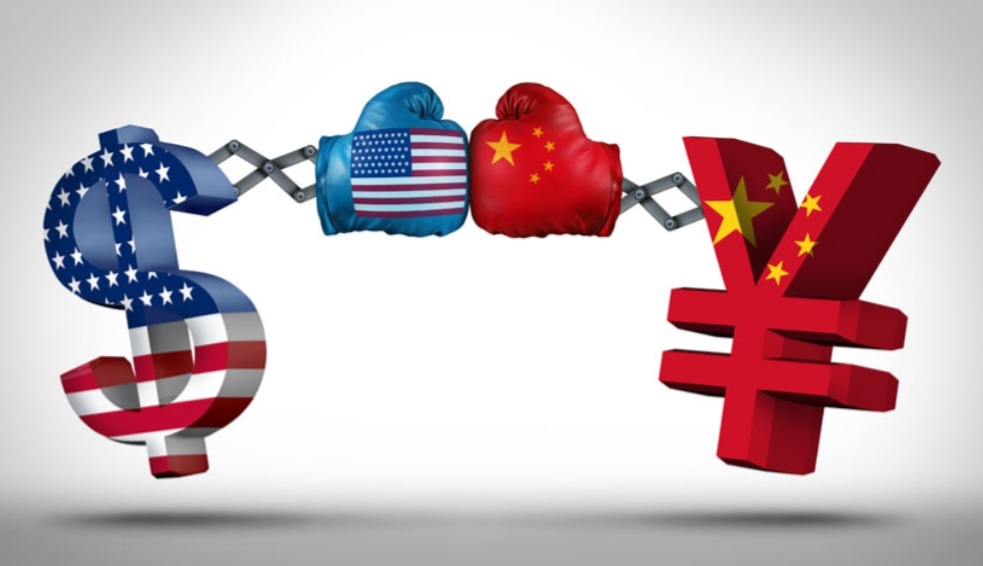By: Prof. Bawa Singh & Vishnu Agrawal

As early 2025, the US and China’s trade war was reached to its inflicting point. In one step, the Trump administration has imposed a universal 10% tariff on most of countries. China was the worst affected country, whereon Trump ratcheted tariffs on goods up to 145%. In reciprocation, China slapped tariffs as high as 125% on the US goods along with restricting rare-earth shipments vital to the latter’s tech and defense supply chains. Originally, Trump’s tariff blitz was started in 2018, whereby he targeted roughly $360 billion of Chinese imports at a 25% rate. It provoked Beijing to retaliate against $110 billion of U.S. goods with duties averaging 20–25%. After a brief spell of downturn, China’s exports rebounded by late 2019, demonstrated its ability to weather external shocks and sustain its export engine.
Given the US blockage of China in its largest market, the latter doubled down on what is being characterized as the “Southward Shift.” China started getting diversified market options and started getting engaged with the Asian, African and Latin American countries. Resultantly, its exports to ASEAN countries increased from 11% in 2017 to 16% in 2023. It was reported by the World Bank, that the increment was propelled by preferential tariff schedules and the rise of regional manufacturing hubs. For the period of January -July, the trade between China and EU has reached 3.35 trillion yuan ($465.3 billion). It shows 3.9% year-on-year growth making up 13% of China’s total foreign trade. Increasing trade with Germany @ 4.3% ($119.7 billion); France @ 2.7% ($46.53 billion); the Netherlands @ 1.5% ($63.40 billion) has reflected the resilient economic ties amidst the ongoing trade war. On the other hand, engagements with Belt and Road Initiative partner countries in Africa and Eurasia have woven dozens of developing countries into China’s economic orbit.
Notwithstanding of the US liberal policies, the US stepped back from the multilateral trade deals. The geo-economic vacuum created by the US trade war, was seized by Beijing. In September 2021, China applied for the Comprehensive and Progressive Agreement for Trans-Pacific Partnership (CPTPP). It was a signal on part of China, of its readiness to embrace high-standard rules of market access, labour rights, and environmental protections (New Zealand MFAT). Similarly, the Regional Comprehensive Economic Partnership (RCEP) came into force in January 2022. The same created a tariff-free corridor among the 15 Asia-Pacific economies. It accounted for 30% of global GDP. It created geo-economic space for China and cemented China’s leadership in regional commerce (ASEAN Secretariat).
In order to overcome the impacts of tariffs at the home front, President Xi Jinping implemented the strategy of “Dual Circulation Economy.” This strategy turbocharged the domestic demands to remain neutralized from the serious impacts by reducing reliance on changing and volatile geo-economic world. This strategy reduced taxes, provided rural credit facilities and hefty subsidies for green infrastructure and tech start-ups. It increased the household consumption’s share of GDP that rose from 38% in 2017 to 44% in 2024 (National Bureau of Statistics). The services sector now accounts for over 53% of GDP, reflecting a structural pivot toward a consumer-led economy that can absorb external shocks.
China has been taking steps to protect its financial system to overcome the challenges on part of Trump’s regime. It has signed agreements with more than 40 central banks of other countries to swap currencies, providing them access to fund of about $600 billion (People’s Bank of China), if those countries needed. China has also been expanding its new digital yuan for international payments. The same was started with trials in Hong Kong and Thailand (PBoC Digital Currency Research) along with Europe and Asia. By the mid of 2024, it had sold $80 billion worth of bonds in these regions.
In order to curb the Chinese capacity of manufacturing semiconductor, the US has imposed a very steep tariffs. Tech Insights has reported that notwithstanding these challenges, Chinese capacity is set to expand from 631 million square inches (MSI) in 2024 to 875 MSI by 2029. It was propelled by Chinese significant investment in 12-inch fabs for advanced chip production. China has prioritized internal demands while strategically directed the surplus to select export markets. China has encountered the impacts of the US tariffs, which was recently doubled from 25% to 50%. This approach enabled China to sustain its growth along with navigating the tariff challenges, and potentially maintaining a competitive influence in the global semiconductor supply chain.
At last, it is concluded that Trump’s trade war was aimed to cripple the Chinese economy, ironically the same had left catalyst impacts on the latter’s economy. By facing the steep tariffs, Chinese leadership has diversified its market outreach through the geo-economic strategy like “Southward Shift,” by deepening economic ties with regions like Asia, Africa, and the EU. The multilateral trade deal like RCEP has neutralized the impacts of steep tariffs. Concurrently, the “dual circulation” strategy at home front, further boosted production, consumption and services, insulating the economy from external economic shocks. Financially, it has expanded currency swaps along with digital yuan trials. These adaptive measures have transformed a punitive trade war into a Chinese strategic opportunity, positioned per se as a resilient, diversified, and increasingly influential player in the global economic order.


Simply wish to say your article is as amazing The clearness in your post is just nice and i could assume youre an expert on this subject Well with your permission let me to grab your feed to keep updated with forthcoming post Thanks a million and please carry on the gratifying work
I do agree with all the ideas you have introduced on your post They are very convincing and will definitely work Still the posts are very short for newbies May just you please prolong them a little from subsequent time Thank you for the post